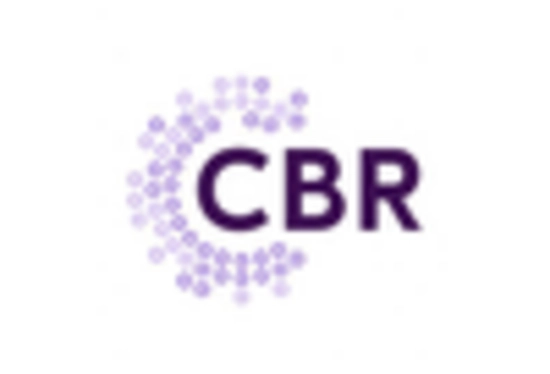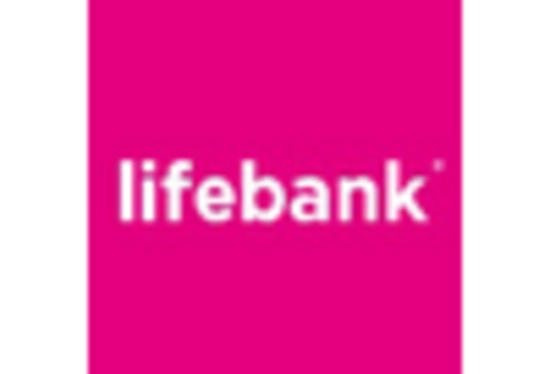The Stem Cell Banking Market is currently characterized by a dynamic competitive landscape, driven by advancements in technology, increasing consumer awareness, and a growing emphasis on personalized medicine. Key players such as Cord Blood Registry (US), Viacord (US), and Cryo-Cell International (US) are strategically positioning themselves through innovation and partnerships. For instance, Cord Blood Registry (US) has focused on enhancing its service offerings by integrating advanced genetic testing into its banking services, thereby appealing to a more health-conscious consumer base. Similarly, Viacord (US) has been expanding its geographical footprint, establishing new facilities to cater to rising demand in underserved regions, which collectively shapes a competitive environment that is increasingly focused on service differentiation and customer engagement.
In terms of business tactics, companies are localizing their operations to optimize supply chains and reduce costs. The Stem Cell Banking Market appears moderately fragmented, with several players vying for market share. This fragmentation allows for a variety of service offerings, but also intensifies competition among key players. The collective influence of these companies is significant, as they continuously innovate to meet regulatory standards and consumer expectations, thereby driving overall market growth.
In August 2025, Cryo-Cell International (US) announced a partnership with a leading biotechnology firm to develop next-generation stem cell therapies. This strategic move is likely to enhance Cryo-Cell's research capabilities and expand its product offerings, positioning the company as a leader in the emerging field of regenerative medicine. The collaboration may also facilitate access to new markets, thereby increasing its competitive edge.
In September 2025, Lifebank USA (US) launched a new digital platform aimed at streamlining the stem cell collection and storage process for parents. This initiative not only enhances customer experience but also reflects a broader trend towards digital transformation within the industry. By leveraging technology, Lifebank USA (US) is likely to improve operational efficiency and customer engagement, which could lead to increased market share.
In October 2025, StemCyte (US) expanded its international operations by entering into a joint venture with a prominent healthcare provider in Asia. This strategic action is indicative of a growing trend towards globalization in the stem cell banking sector. By tapping into new markets, StemCyte (US) is poised to capitalize on the increasing demand for stem cell therapies in the region, thereby enhancing its competitive positioning.
As of October 2025, the Stem Cell Banking Market is witnessing trends such as digitalization, sustainability, and the integration of artificial intelligence. These trends are reshaping the competitive landscape, as companies seek to leverage technology for operational efficiency and enhanced customer service. Strategic alliances are becoming increasingly important, as they allow companies to pool resources and expertise to innovate more effectively. Looking ahead, competitive differentiation is likely to evolve from traditional price-based competition to a focus on innovation, technological advancements, and supply chain reliability, which will be crucial for sustaining long-term growth in this rapidly evolving market.

















Leave a Comment